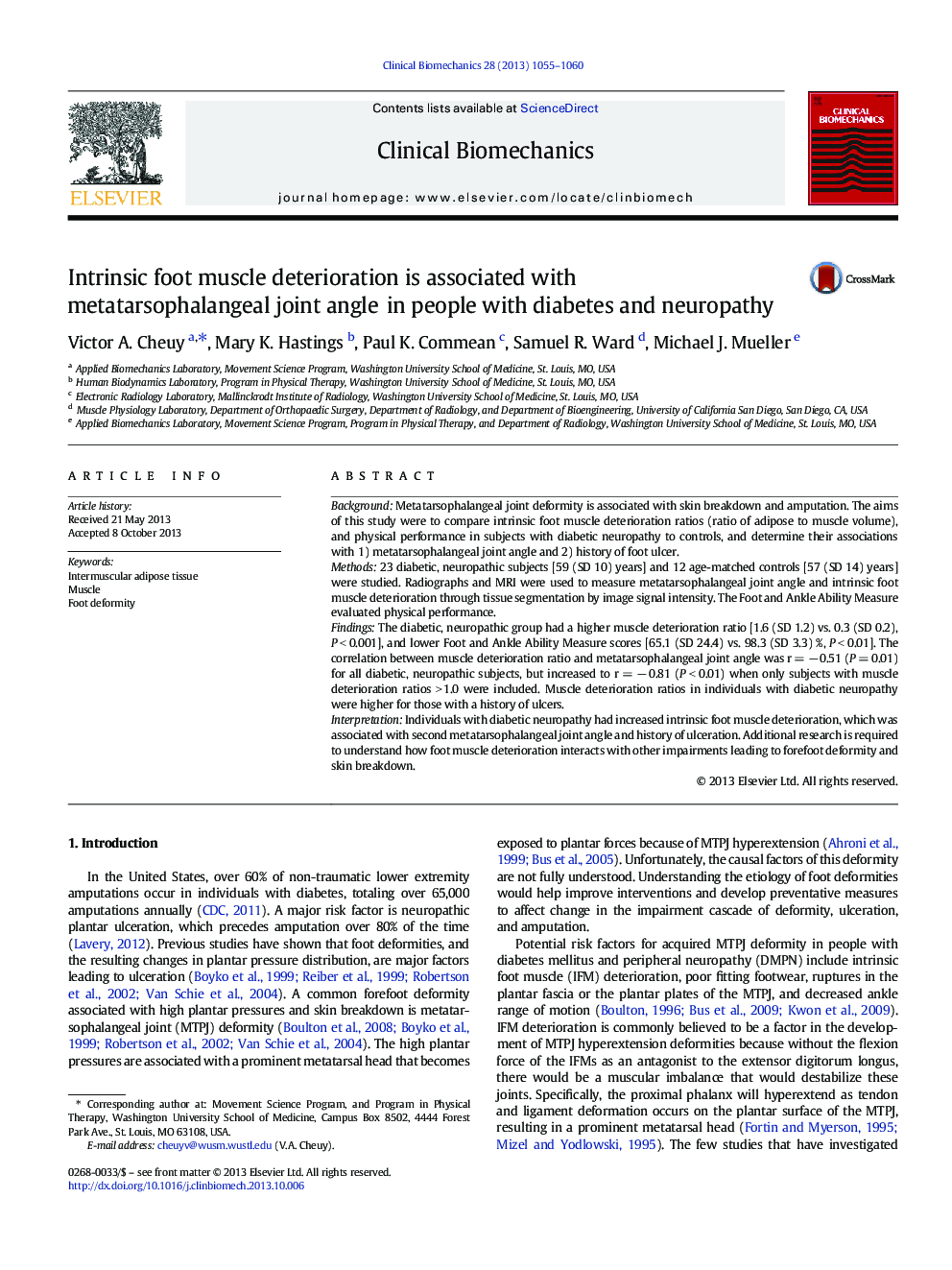| Article ID | Journal | Published Year | Pages | File Type |
|---|---|---|---|---|
| 6204832 | Clinical Biomechanics | 2013 | 6 Pages |
BackgroundMetatarsophalangeal joint deformity is associated with skin breakdown and amputation. The aims of this study were to compare intrinsic foot muscle deterioration ratios (ratio of adipose to muscle volume), and physical performance in subjects with diabetic neuropathy to controls, and determine their associations with 1) metatarsophalangeal joint angle and 2) history of foot ulcer.Methods23 diabetic, neuropathic subjects [59 (SD 10) years] and 12 age-matched controls [57 (SD 14) years] were studied. Radiographs and MRI were used to measure metatarsophalangeal joint angle and intrinsic foot muscle deterioration through tissue segmentation by image signal intensity. The Foot and Ankle Ability Measure evaluated physical performance.FindingsThe diabetic, neuropathic group had a higher muscle deterioration ratio [1.6 (SD 1.2) vs. 0.3 (SD 0.2), P < 0.001], and lower Foot and Ankle Ability Measure scores [65.1 (SD 24.4) vs. 98.3 (SD 3.3) %, P < 0.01]. The correlation between muscle deterioration ratio and metatarsophalangeal joint angle was r = â 0.51 (P = 0.01) for all diabetic, neuropathic subjects, but increased to r = â 0.81 (P < 0.01) when only subjects with muscle deterioration ratios > 1.0 were included. Muscle deterioration ratios in individuals with diabetic neuropathy were higher for those with a history of ulcers.InterpretationIndividuals with diabetic neuropathy had increased intrinsic foot muscle deterioration, which was associated with second metatarsophalangeal joint angle and history of ulceration. Additional research is required to understand how foot muscle deterioration interacts with other impairments leading to forefoot deformity and skin breakdown.
